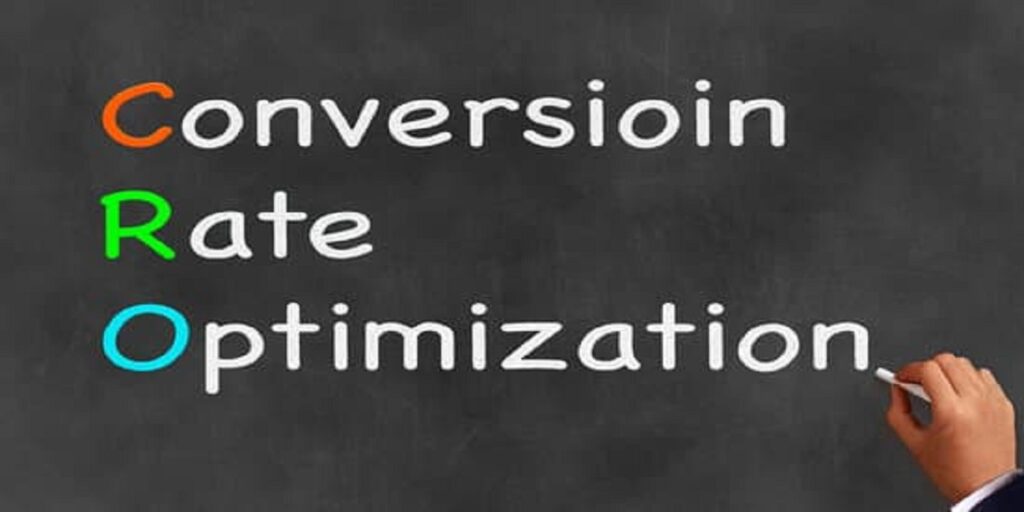Conversion rate optimization (CRO) is a vital process in digital marketing that focuses on increasing the percentage of website visitors who take a desired action, such as making a purchase, signing up for a newsletter, or filling out a contact form. It involves analyzing user behavior, testing website elements, and making data-driven improvements to enhance conversions. Conversion rate optimization (CRO) ensures that businesses maximize their existing traffic rather than simply spending more on attracting new visitors. By optimizing key touchpoints in the user journey, companies can improve their overall return on investment while creating a more satisfying experience for users.
Importance of Conversion Rate Optimization (CRO) in Digital Marketing
In today’s competitive online environment, conversion rate optimization (CRO) has become indispensable for businesses aiming to thrive. High website traffic alone does not guarantee sales or engagement; it’s the ability to convert visitors into customers that determines success. CRO helps businesses identify barriers that prevent conversions and eliminates friction in the user experience. It aligns marketing, design, and user experience strategies toward a common goal—improving the effectiveness of every visitor interaction. Implementing a robust conversion rate optimization (CRO) strategy can lead to higher profitability, better lead quality, and improved customer satisfaction across all digital platforms.
Key Components of an Effective CRO Strategy
A successful conversion rate optimization (CRO) strategy is built on several key components, including user research, A/B testing, website analytics, and conversion funnel analysis. User research provides insights into customer motivations, while A/B testing compares different versions of web elements to identify which performs best. Analytics tools track key performance indicators such as bounce rate, time on page, and conversion paths. The conversion funnel analysis helps pinpoint where users drop off during the purchasing process. By combining these components, businesses can make informed decisions to enhance user engagement and drive higher conversion rates effectively.
Understanding User Behavior for Better CRO Results
One of the most important aspects of conversion rate optimization (CRO) is understanding user behavior. Every visitor interacts with a website differently, and analyzing these interactions helps uncover potential obstacles or motivators that influence decision-making. Tools like heatmaps, session recordings, and surveys can reveal how users navigate a site and where they encounter difficulties. For example, if users consistently abandon their shopping carts, it might indicate a problem with checkout usability or unexpected costs. By studying user behavior, marketers can implement targeted improvements that remove barriers and make the path to conversion smoother.
Design and Layout Considerations in CRO
Website design plays a critical role in conversion rate optimization (CRO) because first impressions greatly influence user trust and engagement. A cluttered, confusing, or slow-loading site can quickly drive potential customers away. To enhance conversions, websites should be visually appealing, easy to navigate, and optimized for all devices. Clear calls-to-action (CTAs), intuitive menus, and concise messaging help guide users toward taking desired actions. Additionally, strategic use of colors, typography, and whitespace can improve readability and focus attention on conversion points. A well-designed website layout encourages visitors to stay longer and complete their intended actions efficiently.
The Role of A/B Testing in Conversion Rate Optimization (CRO)

A/B testing is a cornerstone of conversion rate optimization (CRO) as it enables marketers to make evidence-based decisions. Through A/B testing, different versions of a web page, button, or headline are shown to users at random to determine which variation generates better results. This scientific approach removes guesswork from the optimization process and provides measurable insights. Continuous testing helps refine elements such as CTAs, landing pages, and product descriptions. By iterating based on real user data, businesses can steadily improve performance and achieve incremental gains in conversion rates over time without relying on assumptions or trends.
Optimizing Landing Pages for Higher Conversions
Landing pages often serve as the first point of interaction between a potential customer and a business, making them a crucial focus area for conversion rate optimization (CRO). A well-optimized landing page should have a clear purpose, compelling headline, persuasive copy, and a strong call-to-action. The design should minimize distractions while emphasizing the value proposition. Including social proof, testimonials, or trust badges can also increase credibility. Additionally, optimizing loading speed and ensuring mobile responsiveness enhance the user experience. When designed with CRO principles, landing pages can dramatically increase the likelihood of converting visitors into leads or buyers.
Leveraging Data and Analytics for CRO Success
Data is the foundation of effective conversion rate optimization (CRO). By analyzing website analytics, marketers can identify trends, performance gaps, and opportunities for improvement. Metrics such as click-through rates, bounce rates, and exit pages reveal how users interact with content. Integrating analytics with customer feedback and heatmap data allows for a comprehensive understanding of user intent. Data-driven insights help in prioritizing changes that have the most significant impact on conversions. Businesses that continuously monitor and evaluate their metrics are better positioned to adapt strategies, optimize performance, and maintain a competitive advantage in their digital campaigns.
Personalization in Conversion Rate Optimization (CRO)
Personalization has emerged as a powerful tactic in conversion rate optimization (CRO) by tailoring user experiences to individual preferences and behaviors. When users see relevant content, product recommendations, or offers based on their previous actions, they are more likely to engage and convert. Advanced personalization tools use data such as location, device type, and browsing history to deliver customized experiences in real time. For example, showing returning visitors special discounts or displaying dynamic product suggestions can increase engagement rates. By incorporating personalization into CRO strategies, businesses can create deeper connections with their audiences and drive consistent growth in conversions.
Mobile Optimization and CRO Performance
With a growing number of users accessing websites from mobile devices, mobile optimization is now integral to conversion rate optimization (CRO). A mobile-friendly design ensures that all elements, from navigation menus to forms and buttons, function seamlessly on smaller screens. Slow-loading pages, unresponsive layouts, or difficult-to-use interfaces can lead to high bounce rates. Optimizing for mobile includes compressing images, simplifying design elements, and improving page speed. Additionally, using mobile-specific CTAs and simplified checkout processes enhances user experience. Businesses that prioritize mobile CRO can capture more leads and sales from the expanding base of mobile consumers.
Common Mistakes to Avoid in CRO
Even with a well-planned strategy, several mistakes can undermine conversion rate optimization (CRO) efforts. Relying on assumptions instead of data, neglecting mobile users, or making too many changes at once can lead to inconsistent results. Ignoring A/B testing insights or failing to analyze long-term user trends may result in missed opportunities. Another common error is focusing solely on aesthetics while overlooking usability. CRO should be a continuous process that balances creativity with analytics. Avoiding these mistakes ensures that optimization efforts remain effective, data-driven, and aligned with business goals over time.
Conclusion
Conversion rate optimization (CRO) is more than just improving website performance—it’s about transforming user experiences into measurable business success. By combining analytics, design, testing, and personalization, CRO empowers businesses to extract more value from their existing traffic. It ensures that every click, visit, and interaction has the potential to drive real conversions. Companies that invest in continuous CRO efforts gain a competitive edge, achieve sustainable growth, and enhance customer satisfaction. In a digital marketplace driven by data and user experience, mastering CRO is the key to long-term profitability and online success.
















